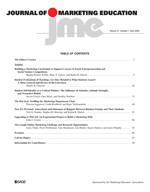Texting In Class: Hazardous To Your Grades?
Students do it on the sly. Instructors, in general, despise it. But texting has become a way of life–with studies revealing that young people spend 15% of their waking life doing it–and it’s bound to happen in the marketing education classroom. How does it impact students’ GPAs and what, if anything, can instructors do about it? A new study, published in the Journal of Marketing Education by Dennis E. Clayson of the University of Northern Iowa and Debra A. Haley of Southeastern Oklahoma University, offers some interesting findings and practical solutions:
This exploratory study looks at the phenomena of texting in a marketing education context. It outlines the difficulties of multitasking within two metacognitive models of learning and sets the stage for further research on the effects of texting within class. Students in marketing classes in two different universities were surveyed. They received an average of 37 texts per day and initiated about 16. More than 90% of the respondents reported receiving texts while in class and 86% reported texting someone from class. Even though students believed they could follow a lecture and text at the same time, respondents who did text within marketing classes received lower grades. Contrary to other research, texting frequency was generally unrelated to GPA. Implications for both pedagogical issues and research in marketing education are discussed.
Read the complete article here, and learn more about the Journal of Marketing Education by clicking here. You can also sign up for e-alerts from the journal to be notified about the latest techniques in marketing education, emphasizing new course content and effective teaching methods.
































































































